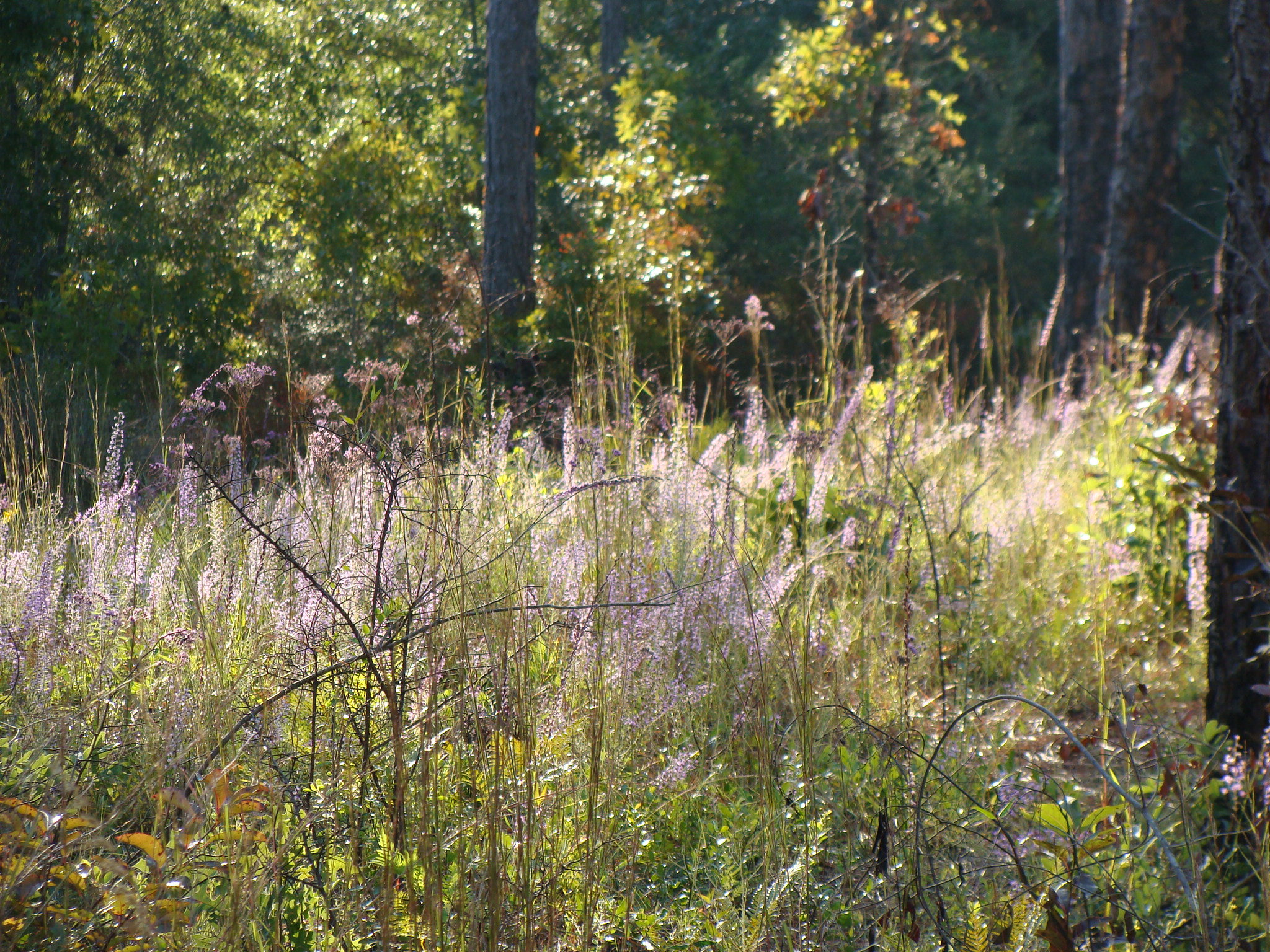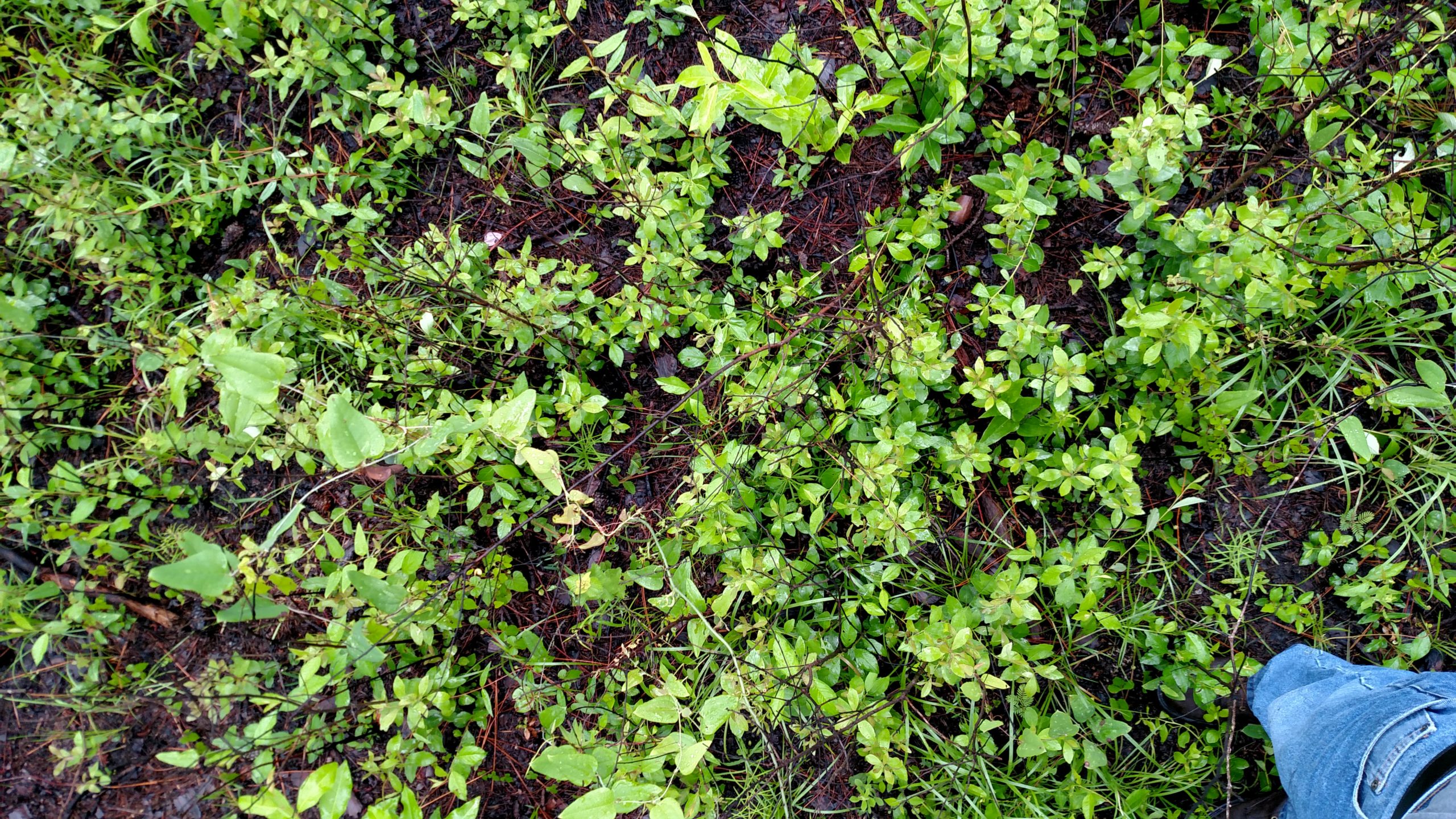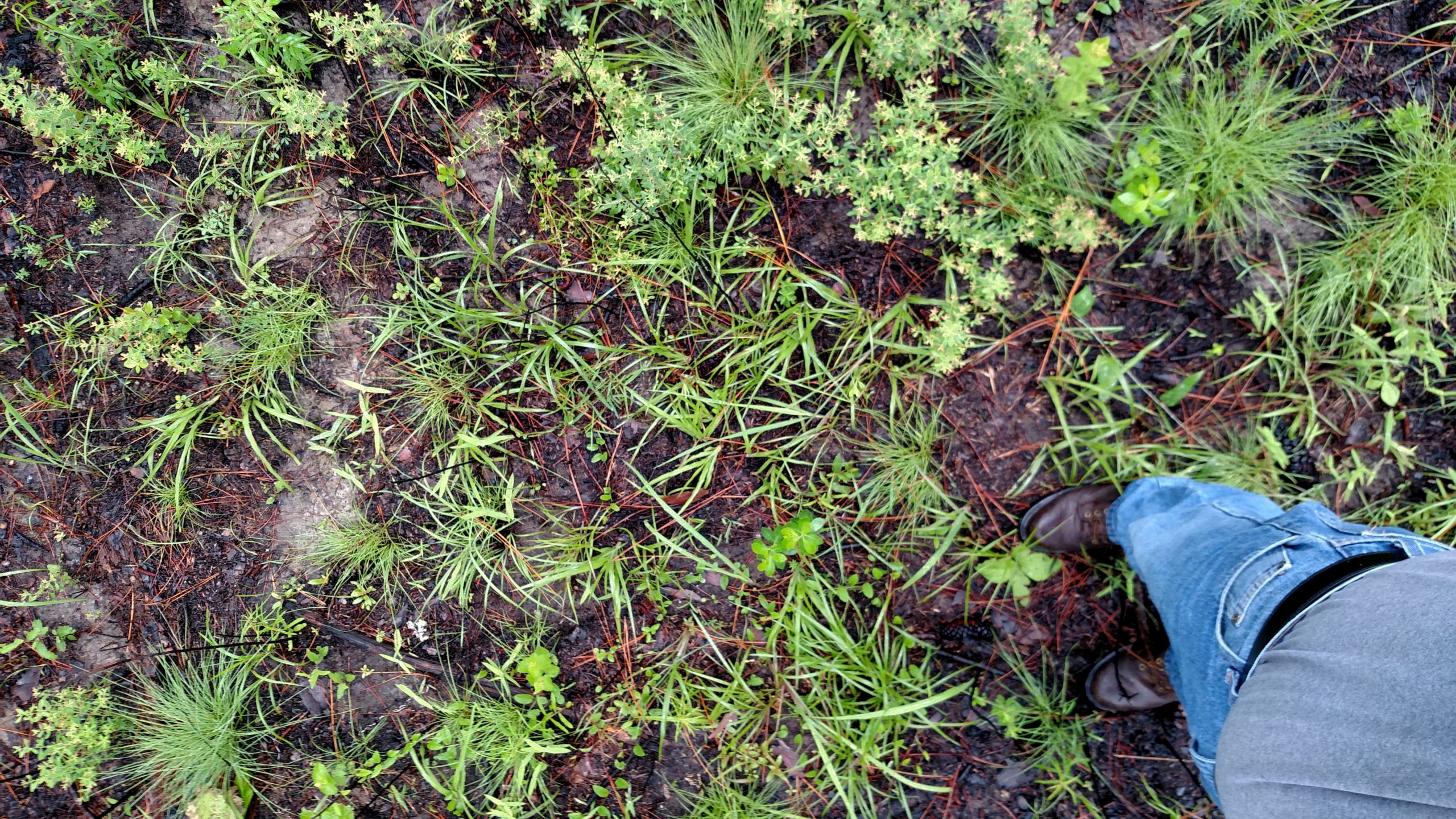Property History
Producing native understory at the Solon Dixon Forestry Education Center is a desired outcome of our forest management operations as it serves various purposes. Native grasses, in conjunction with pine straw, promote “better” prescribed fire as the grasses add fuel and help to “loft” the straw for air circulation. Native forbs are highly preferred by wildlife, while the seeds of forbs and grasses are also highly sought after. Pollinators prefer native flowering plants, and they provide great aesthetics.

Forest Management
Forest management activities that promote native understories include timber harvesting to open canopies for sunlight, prescribed fire (especially during the growing season) along with selective herbicide treatment, either alone or in sequence, to remove brushy competition and thus favor the grass forb communities.

Diverse Species
A 2013 study from Auburn University found over 1,015 species of plants within the 5,350 acres of property at the Solon Dixon Forestry Education Center. That accounts for one-quarter of the total species of plants in the State of Alabama.
Triclopyr Herbicide Application


Pre-application of Tryclopyr herbicide
Target species were gallberry and other broadleaf plants competing with the native grass/forb community.
After Forest Management
The pictures are almost 10 months apart. After treatments, woody vegetation was reduced which promoted grasses.
